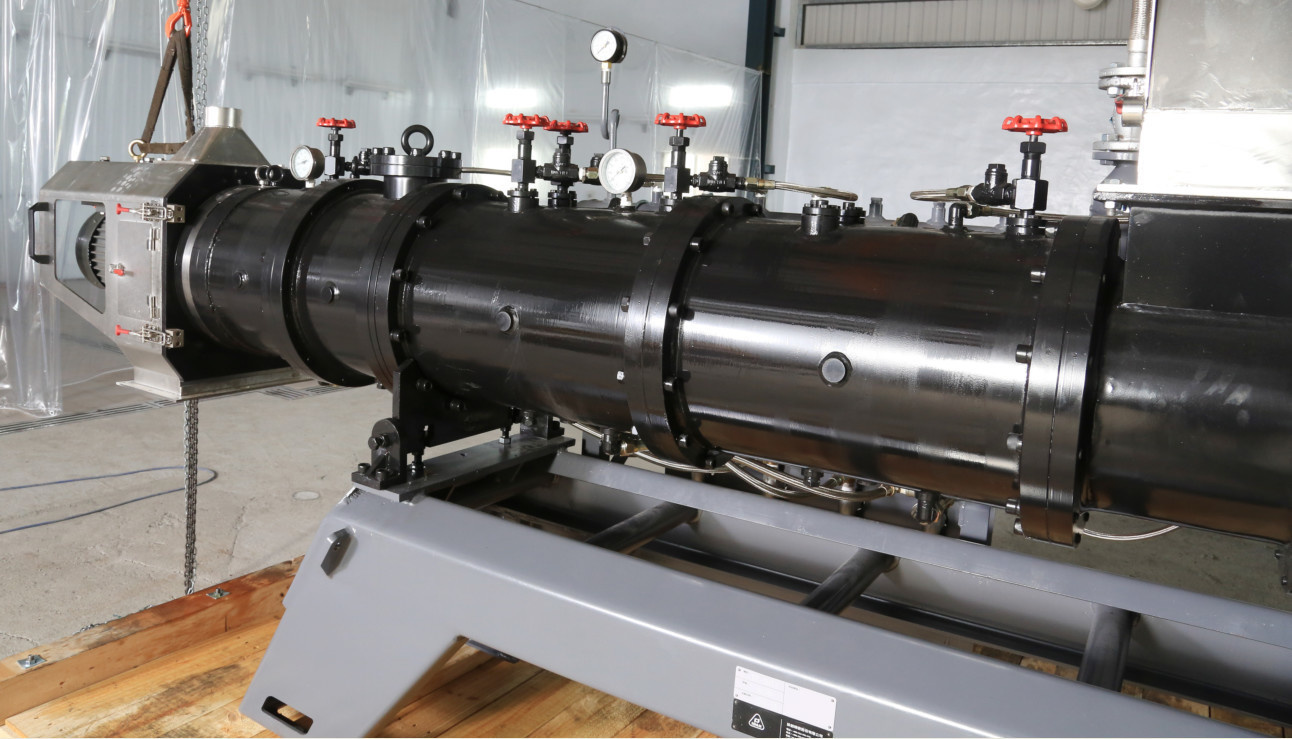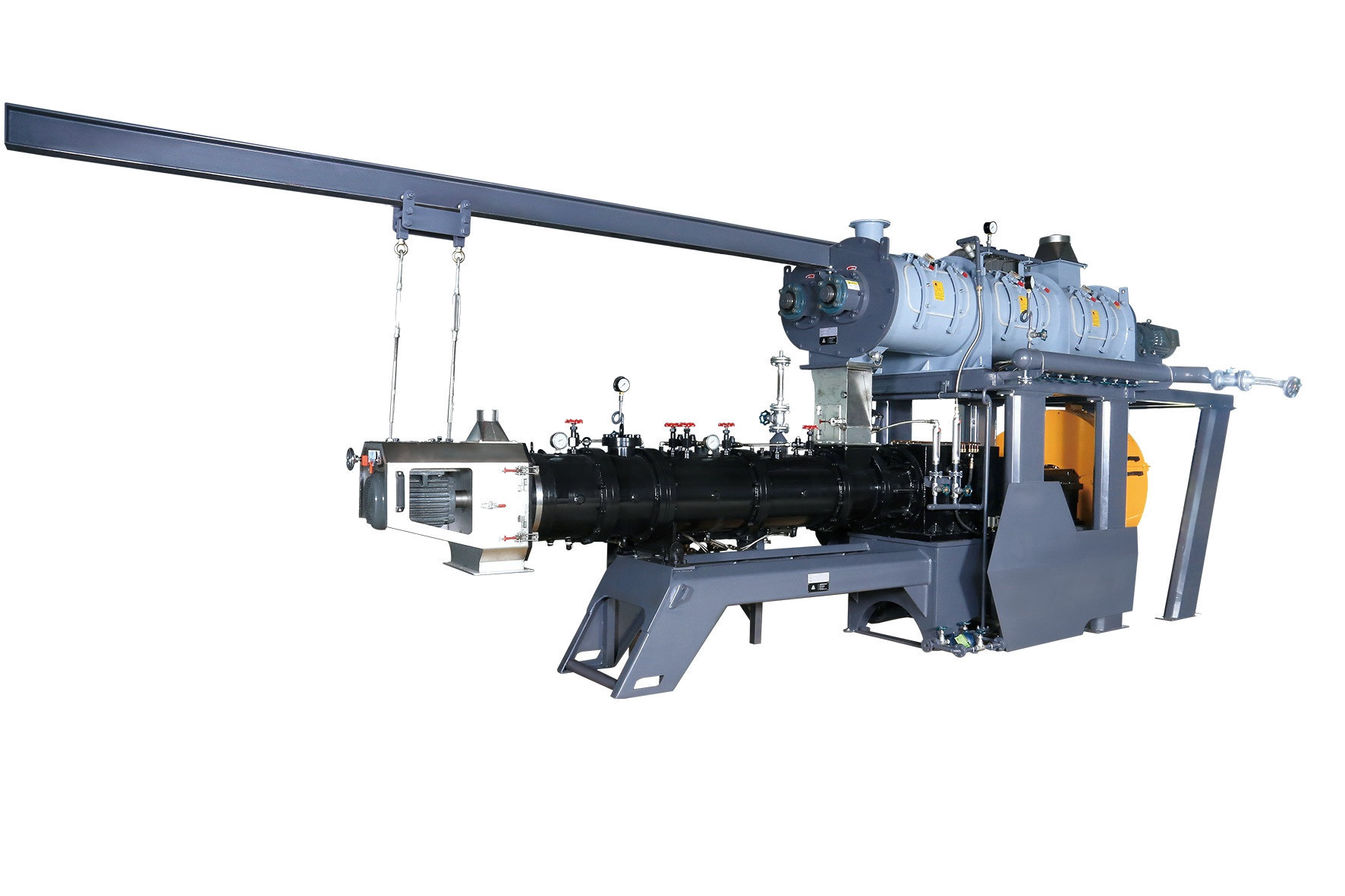Extrusion Revolution
This article is published in International Aquafeed May 2017
Background of Innovation
Still in its infancy stage in Southeast Asia, the pet food and
aquafeed industry (especially for floating fish feeds made by
extrusion) has been experiencing high organic growth by volume of
feeds produced every year. To fulfill this growing demand, more lines
of extrusion equipment is invested. Several challenges have emerged
from this unprecedented expansion: lack of qualified operators,
production problems due to formulation changes (increasing the
concentration of plant protein versus animal protein), loss of startup
wastes, unseasoned equipment operational and maintenance skills,
higher standards for feed quality, and costs of energy per ton of
feeds produced.
Manufacturers of pet food and aquatic feeds have seen significant
increases in the cost of their raw materials and energy costs. Profit
margins have been difficult to maintain and the future promises no
change in this situation. IDAH has always recognized these issues and
it is built into our core philosophy to supply solutions that maximize
opportunities for our customers.

Figure 1. Barrel of ContraTwin extruder
ContraTwin: answer to all challenges
To meet these new challenges, a revolutionary extrusion system designed
to fit the local markets was required. With a 40-year history in
Aquafeeds Production, IDAH developed its answer: ContraTwin. It is
designed with twin screw extrusion features but with re-engineered screw
designs and rotation direction to accommodate future aquafeed
formulation. Developed to convey very sticky and puffy material (such as
high fiber materials like plant protein), ContraTwin uses a very
positive pump that does not waste mechanical energy or shear. For
tougher materials, operators can perform cooking in the mid-barrel
system: this is where the actual work is done. The result of this strong
pump and cooking significantly increases efficiency and utilizes lower
Specific Mechanical Energy (SME) when compared with other single or
co-rotating twin screw extrusion.
The ContraTwin is designed with an innovative 3-part transmission
system. A motor drives a splitter gearbox and a relatively large bearing
base is aligned and interconnected: this delivers a 24/7 rugged
operation machine. The ContraTwin extruder is very easy to use and
offers a unique operation experience. It is designed for beginner
operators, easing most customer fears of finding skillful extruder
operators.
Sharing the benefits of extruders with twin screws, ContraTwin has low
start up waste and wide product characteristics compared to single screw
extruders. ContraTwin can produce aquafeed with extruder die ranging
from 0.6mm floating fish feeds to 27 mm sinking fish feeds. Remarkable
energy saving per ton (up to 20% energy saving) have been observed at
customer sites. Another method that ContraTwin saves energy is by using
more direct steam thermal energy instead of mechanical energy or shear.
Due to the significant reduction in energy consumption, feed millers can
produce fewer carbon footprints: directly giving them sustainable feed
products.
Features and Benefits of ContraTwin:
- Patent design with counter-rotating twin screws. Unique drive train to minimize capital costs, energy costs and maintenance costs – We engineer for rugged 24/7 operations.
- ContraTwin screws don’t waste energy shearing product. They convey even the most difficult fibrous ingredient mixes to the point in the extruder where we choose to do the work. The very positive action of the ContraTwin screws forms highly uniform pellets even when fiber content is high or viscosity is low.
- ContraTwin mid-barrel die with shaft support system is the place we choose to do the work for most products. This short intensive work zone minimizes the wasted energy resulting from traditional extrusion systems, with minimum back-flow (pressure flow) giving minimized length of the work zone, reducing torque.
- All this creates a machine that has specific mechanical energy (SME) costs and wear costs only typically previously seen in single screw systems, with capital costs that also match.
- Smallest die plate is 0.6mm for floating fish feeds.

Figure 2. ContraTwin Extruder model EP-156D.

